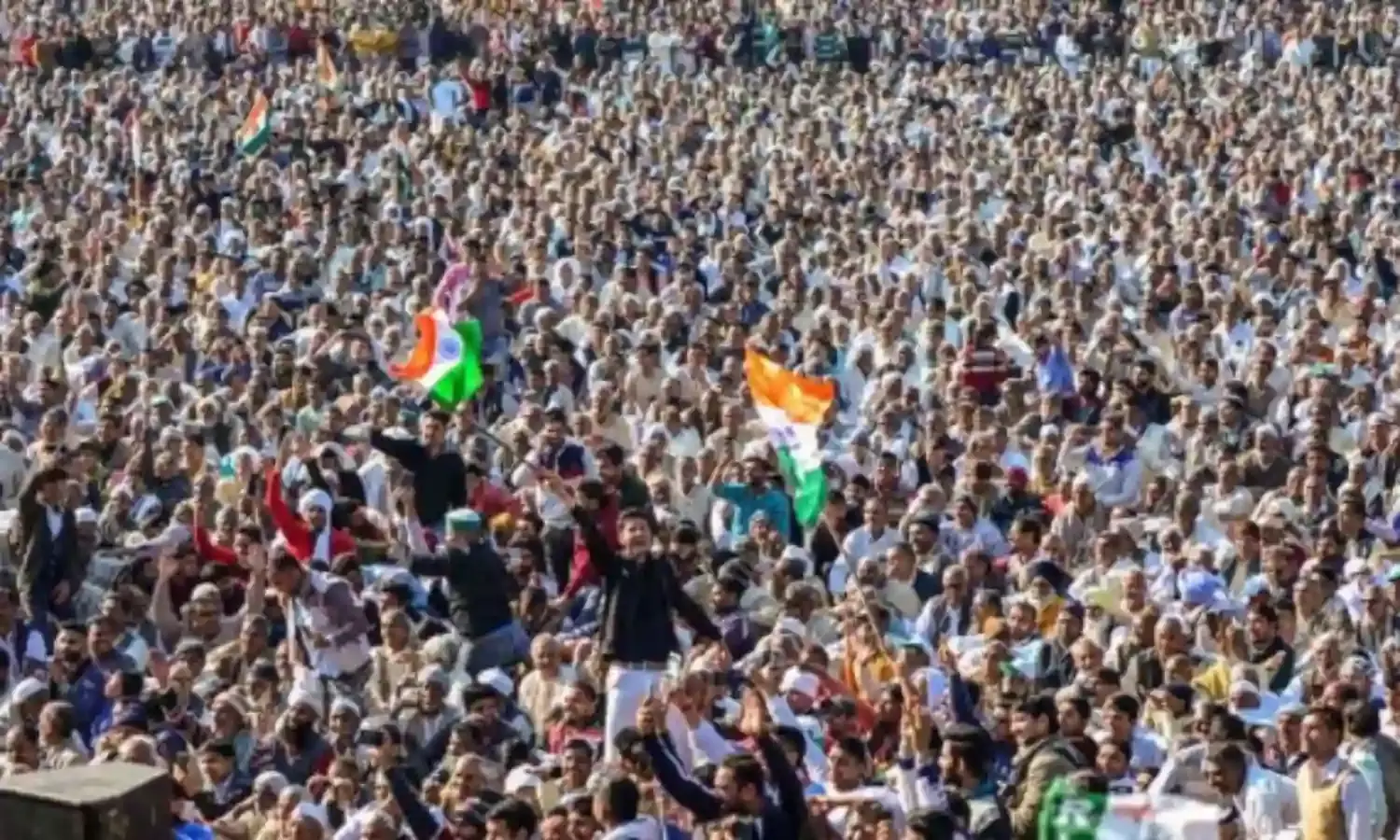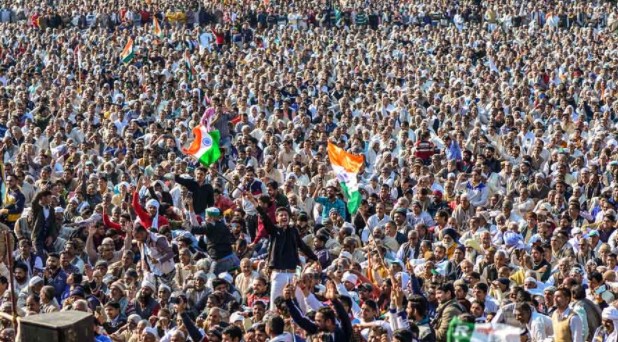Jab Tak Raat Baaki Hai: Documenting the Movement of History
A new film on the farmers' movement

The ongoing farmers’ movement has found its way into history, despite the best efforts of the ruling establishment, and organizations and individuals who understand the importance of documenting the movement are making several innovative efforts to do so. One such initiative comes from filmmaker Rajkumari Asthana, whose recent film titled Jab tak raat baaki hai (Until the Darkness Lasts) is the first of a planned series intended to capture a people's history of the farmers’ movement.
The movement that initially began as a agitation of the peasantry in Punjab today stands out as a people’s movement with labour organizations, student and youth groups, writers, poets, intellectuals, lawyers, women organizations and other members of the civil society pitching in against the prevailing “injustice”. Talking to people on the streets one gets the feeling that this is a movement of hope, in the face of the misery most people have been contending with for the last several years.
This can be understood from the issues raised at all the small and big gatherings being organized across the country. There is the issue of forest rights being raised in the marches in Chhattisgarh, Madhya Pradesh, Jharkhand, Maharashtra and Odisha among other places, and then there are the issues of employment, education, healthcare, inflation, targeting of intellectuals and social activists, lynching of minorities, distortion of history and the shortcomings of the administrative system that get discussed and debated in these dharnas, demonstrations and rallies.
“What has been happening on the ground is wonderful. How long could people be tolerating what was being done to them? Finally what has been happening is the coming together of the people, the working class,” Asthana tells The Citizen.
She shares that she worked on her film for seven months, interviewing farmer leaders and those who have pitched alongside them, the women participants, while trying to capture various aspects of the movement.
To bring out the documentary she had to sacrifice what she calls “my own desire for perfection”, as she wanted more and more people to know and understand what is happening on the ground in India amidst the elaborate efforts being made to keep all this away from the public knowledge.
Asthana says there was nothing of this scale in terms of a public movement taking place in India for the last few decades. She jokingly points out that she had resigned herself to spending years in “Aryavart” - caste Hindu society - when this happened, with the people rising as one.
“You need a lot of courage to have a movement like this in the present times. And the farmers have shown this courage. The most interesting thing is that the farmer unions in Punjab have been working relentlessly among the masses over the decades on such issues, and it is all getting reflected in the support that they have received. They have been working without bothering about the results,” she says.
More than 30 farmer organizations have come together despite their differences to make the fight against the “pro-corporate” farm laws a common effort. In Asthana’s film this comes out very clearly in her conversations with farmer leaders on how they have been opposing and warning people right from the early 1990s of the “anti people” outcomes of India becoming a signatory to the World Trade Organization regime.
She tells this reporter that she was inspired by the high level of consciousness among the people who are participating in this movement today. Like many others she thinks the movement will be a fountainhead for several other people’s movements in days to come, as it has given them the energy and confidence to stand up for their rights in India and around the world.
She points to the labour organizations and other groups joining hands with the farmers. “I would say that the farmers are still advantaged as they can support themselves. But things are much more difficult for Dalit labour who cannot forgo their daily wages. The same is the case with industrial workers.”
On the social turf she finds that there are several differences between participant groups that can only be ironed out with time. She observes that groups like the Bhartiya Kisan Union (Ugrahan) are “pretty evolved” when it comes to social, gender, economic, caste equality as they have been working on these for years now.
The film shows her questioning leaders from Haryana on the issues of “honour killings” that have followed love marriages outside caste, class or religious bounds. The scenes bring out the social dynamics at work in rural areas very well.
Asthana feels that the student and youth organizations camping with the farmers at various protest sites have a large role to play in reaching out to the common man who is participating in this movement. These organizations can raise public consciousness on social issues to completely new levels as they have a captive audience at these sites.
On being asked about the recent developments that point to an emerging direct confrontation with the government she replies, “The government doesn’t run the country. They are selling out everything to select companies and corporates. The fears on power crisis and coal shortage also point towards this.”
Asthana, who has earlier made documentaries on people’s movements in India and abroad, is now looking at making some quick films on the socio-economic and socio-political scenario in poll bound Uttar Pradesh. She is keen to include people who after having participated in the process of communalization have had a change of heart.

Watch Jab tak raat baaki hai here (50 min)



